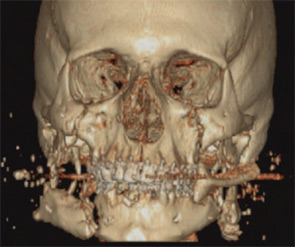
Otolaryngologist and Professional Musician Says Medicine and Music Work in Sync
For Soham Roy, MD, MMM, being able to perform violin on stage with one of his longtime patients was “one of the coolest things I ever did.”

For Soham Roy, MD, MMM, being able to perform violin on stage with one of his longtime patients was “one of the coolest things I ever did.”
It’s a fact: An increasing number of American women are entering medicine. In the U.S. today, half of matriculating medical students, and 28 percent of all practicing physicians, are women.
In the more than ten years that Paul Levine, MD, FACS, has served as chair of otolaryngology and head and neck surgery at the University of Virginia in Charlottesville, he has heard his share of complaints about high-powered surgeons who are difficult to work with.
Beyond the handful of long-established and well-integrated sites being labeled as de facto accountable care organizations (ACOs), advocates are seizing the moment and pushing for a bold vision of what role ACOs will play in the movement to reform the health care payment system across the country.

Ever since the first fully equipped otolaryngology team was sent to the Air Force Theater Hospital (AFTH) in Balad, Iraq in 2004, an otolaryngologist-head and neck surgeon has become a permanent member of any deployed multispecialty head and neck team, working alongside a neurosurgeon, ophthalmologist and oral and maxillofacial surgeon.

Stroke, muscular dystrophy, Parkinson’s disease, gastroesophageal reflux disease (GERD), head and neck cancer, Zenker’s diverticulum—each of these disparate conditions can cause dysphagia.
What is the best procedure for surgical management of drooling? Background: Surgical treatment for sialorrhea is considered when conservative measures fail. Options include sublingual gland excision, submandibular gland (SMG) duct […]
Will propranolol become the mainstay of treatment for symptomatic infantile hemangiomas (IH)? Background: IH are the most common tumor of infancy, affecting four to 10 percent of infants. Spontaneous involution […]
What are the effects of cochlear implants (CIs) on language among children with disabilities? Background: Early implantation of a CI in children with typical development is strongly associated with improved […]
Can the vascular endothelial growth factor (VEGF) inhibitor bevacizumab (Avastin) treat hereditary hemorrhagic telangiectasia (HHT) epistaxis? Background: HHT is an autosomal dominant disorder involving abnormal blood vessel development. An estimated […]
With no laryngeal nerve injury, do vocal characteristics change after thyroidectomy? Background: Vocal dysfunction is a feared complication of thyroidectomy. While operative injury to the recurrent laryngeal nerve is a […]